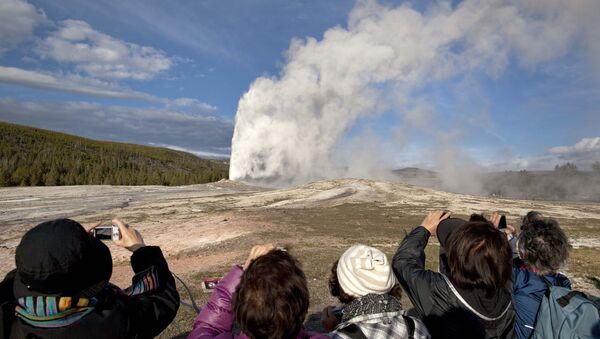Anyone worried about Yellowstone’s volcano erupting can rest assured that the US Geological Survey is keeping very close tabs on the caldera, and it says the chances are “very remote,” the Daily Express reports.
Mike Poland, scientist-in-charge of the Yellowstone Volcano Observatory, revealed that there's a "mantle melting anomaly deep beneath the surface," which feeds "a couple of magma chambers."
He says one is pretty deep "15 miles or so beneath the surface, and it's full of very low viscosity magma called basalt," which is apparently the kind stuff that spews out of Hawaii’s volcanoes. It’s "low viscosity, flows very easily. In turn, Yellowstone’s "basaltic magma body feeds a higher-level reservoir of rhyolite – a sticky magma, prone to be more explosive, and this sits about three miles beneath the surface in parts of Yellowstone."
Poland noted, however, that one should not think of these chambers as "gigantic magma bodies that are just full of roiling, boiling liquid material."
"In fact, most of this is solid. The upper reservoir is only five to 15 percent molten, and the lower reservoir is only about two to five percent molten," Poland explained. "It’s a mushy plasticky zone with little bits of melt in the middle. That's what the Yellowstone magma system looks like, and this is what drives the hazards in the region. Now, of course, the most well-known hazards are the big explosions, that's what everyone talks about."
He also warned that a super eruption of Yellowstone, like the ones that already happened hundreds of thousands of years ago, "would be very devastating to the central part of the US."
"We've done simulations on how ash would fall and blanket much of the US, this is probably what happened when this caldera first formed 631,000 years ago," Poland remarked, noting, however, that "the chances of this sort of event are very remote” as they occur "once or twice every million years.”
"What happens more often are lava flows. Since the last big Yellowstone explosion 631,000 years ago, there have been about two dozen lava flows, and you can see them here in these different colours," he said. "The initial pulse of lava flow activity was 500-600,000 years ago. We had these orange bits of lava come out, and then there was another pulse of activity that occurred about 170,000 to 70,000 years ago, that gave us all of this pink [shaded] lava here."




